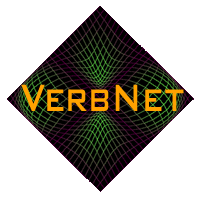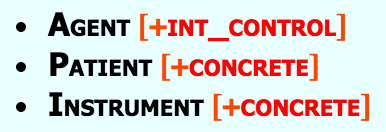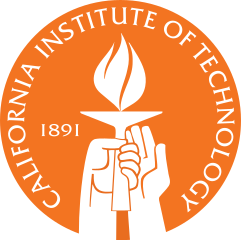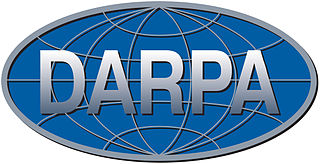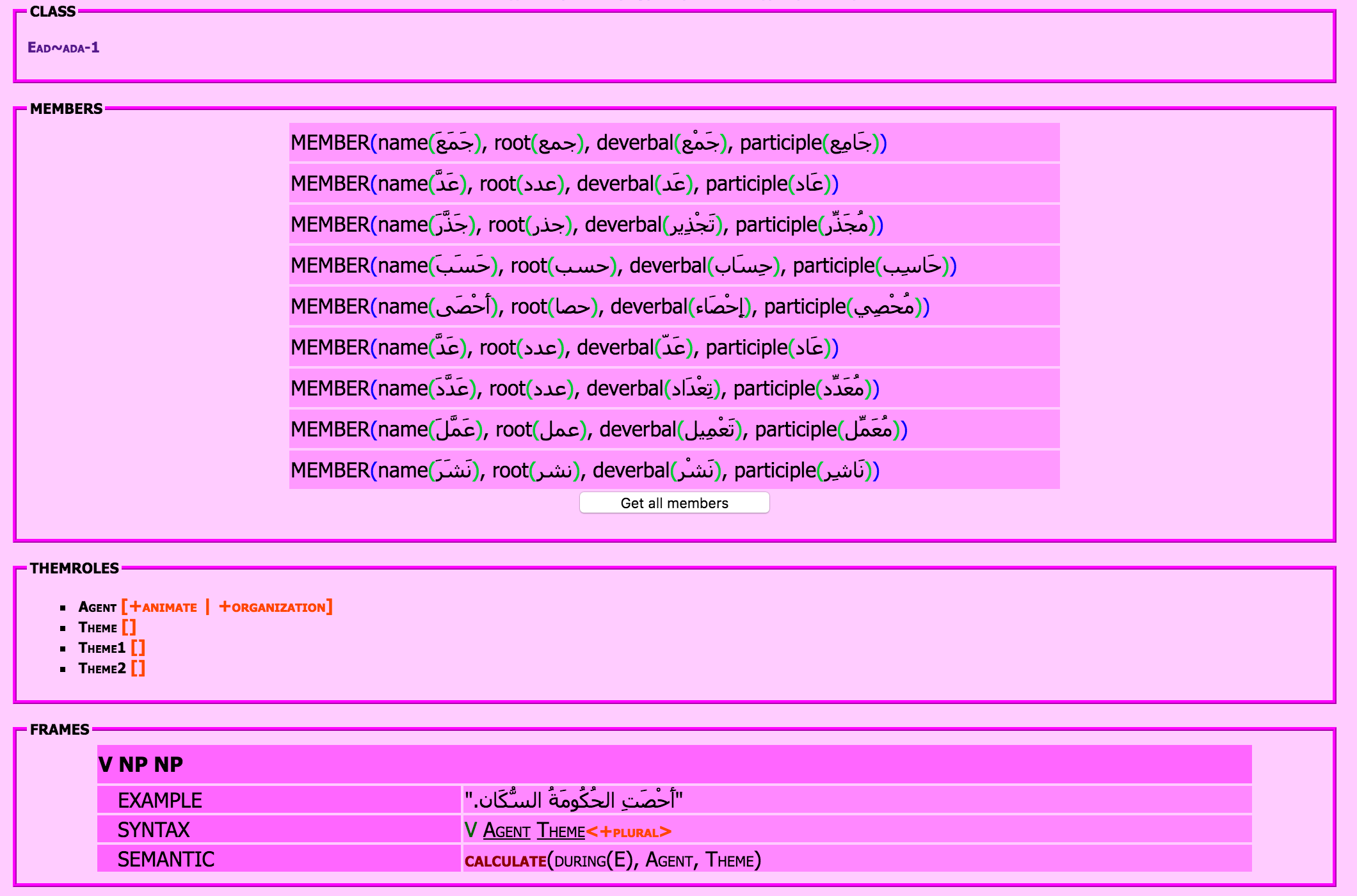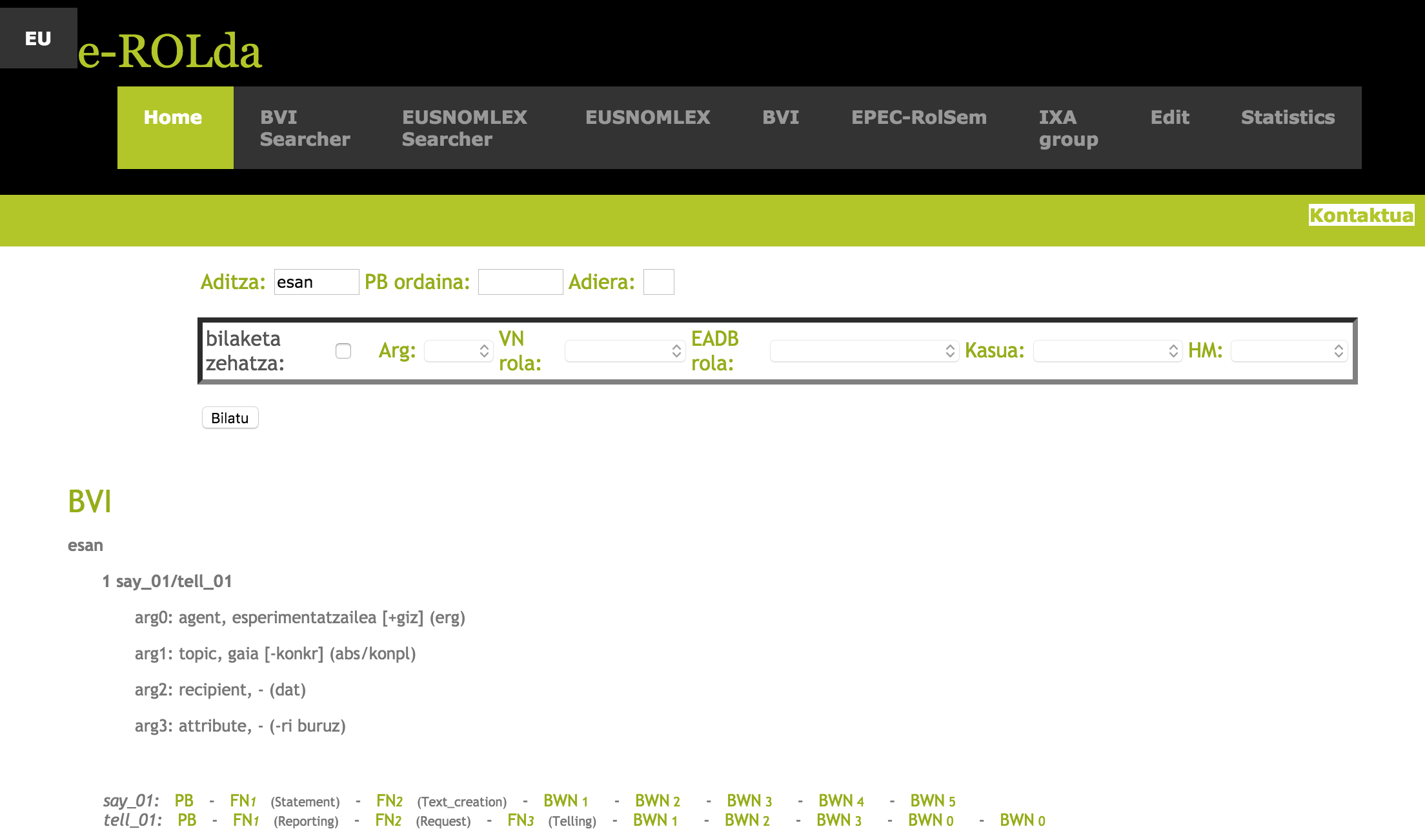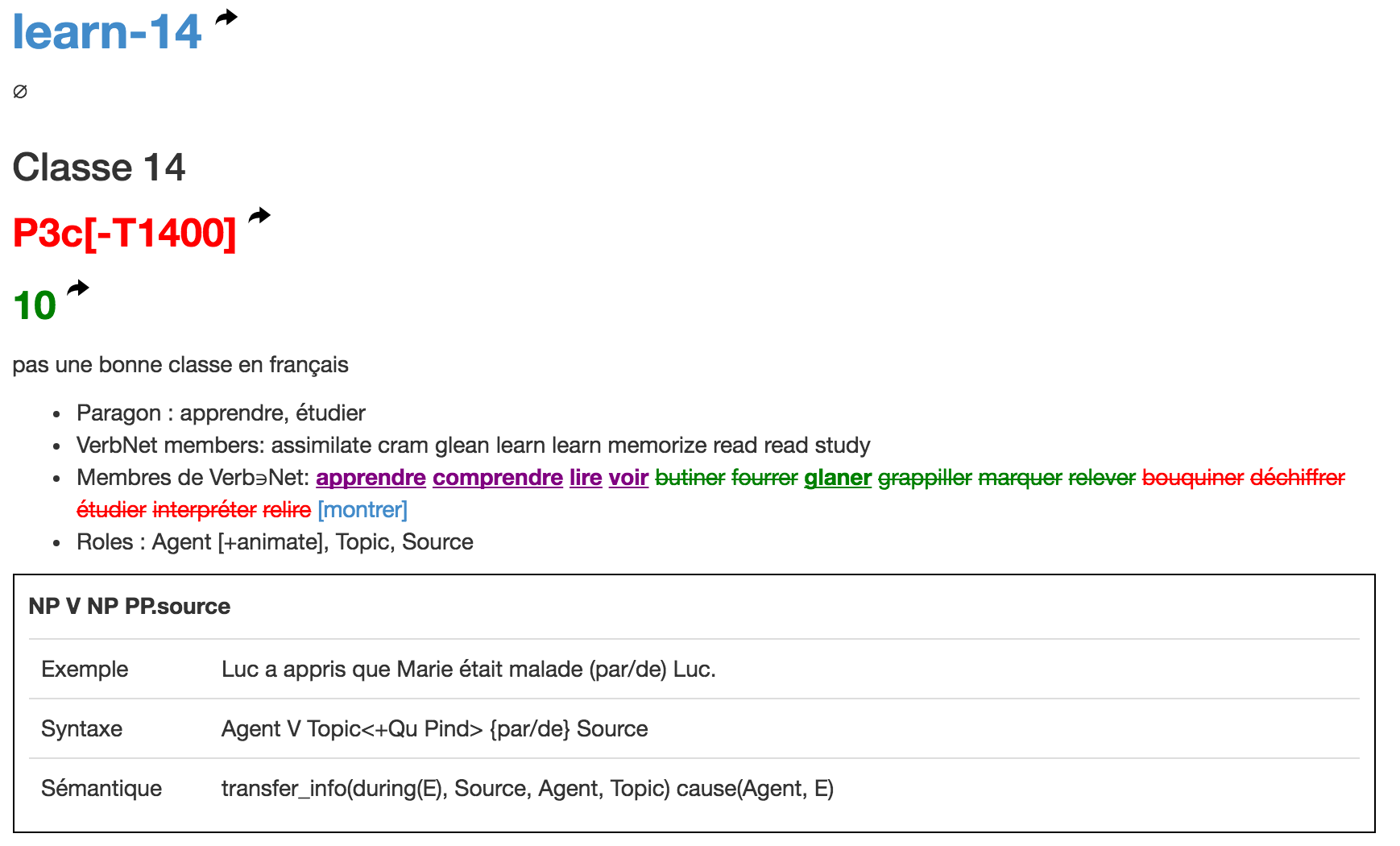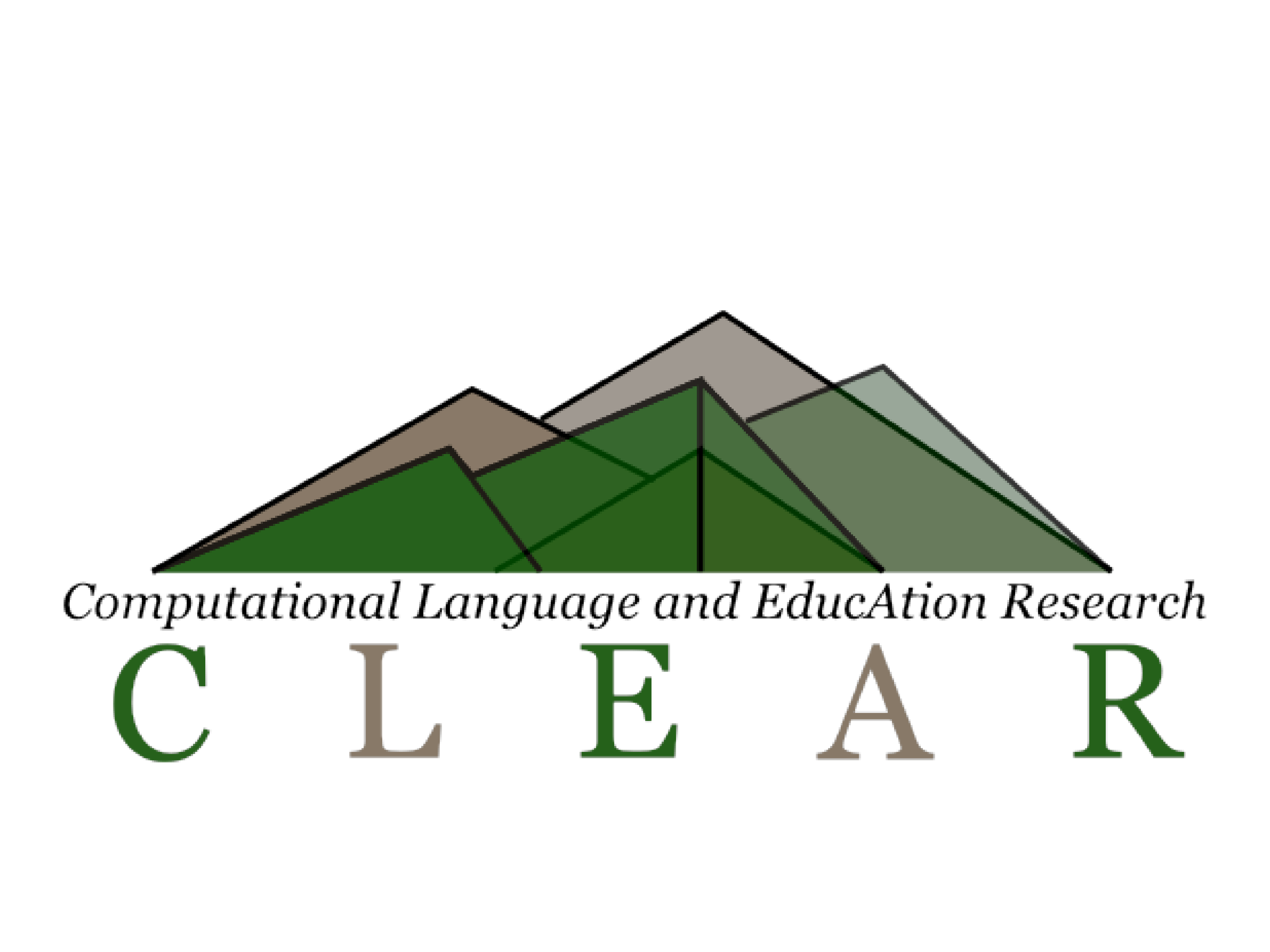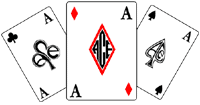What is VerbNet?
VerbNet (VN) (Kipper-Schuler 2006) is the largest on-line verb lexicon currently available for English. It is a hierarchical domain-independent, broad-coverage verb lexicon with mappings to other lexical resources such as WordNet (Miller, 1990; Fellbaum, 1998), Xtag (XTAG Research Group, 2001), and FrameNet (Baker et al., 1998). VerbNet is organized into verb classes extending Levin (1993) classes through refinement and addition of subclasses to achieve syntactic and semantic coherence among members of a class. Each verb class in VN is completely described by thematic roles, selectional restrictions on the arguments, and frames consisting of a syntactic description and semantic predicates with a temporal function, in a manner similar to the event decomposition of Moens and Steedman (1988).
(return to top)
The VerbNet Approach
VerbNet groups together verbs with identical sets of syntactic frames and semantic predicate structures, as in the example below for class CUT-21.1-1:

These classes may inherit frames from a parent class, resulting in a hierarchical structure:

The classes in VerbNet are based on an extension of Levin (1993) classes, with the understanding that the syntactic form of a verb and its arguments informs its semantics. Observe, for example, the differences and similarities between the following two classes, CUT-21.1 and BREAK-45.1:
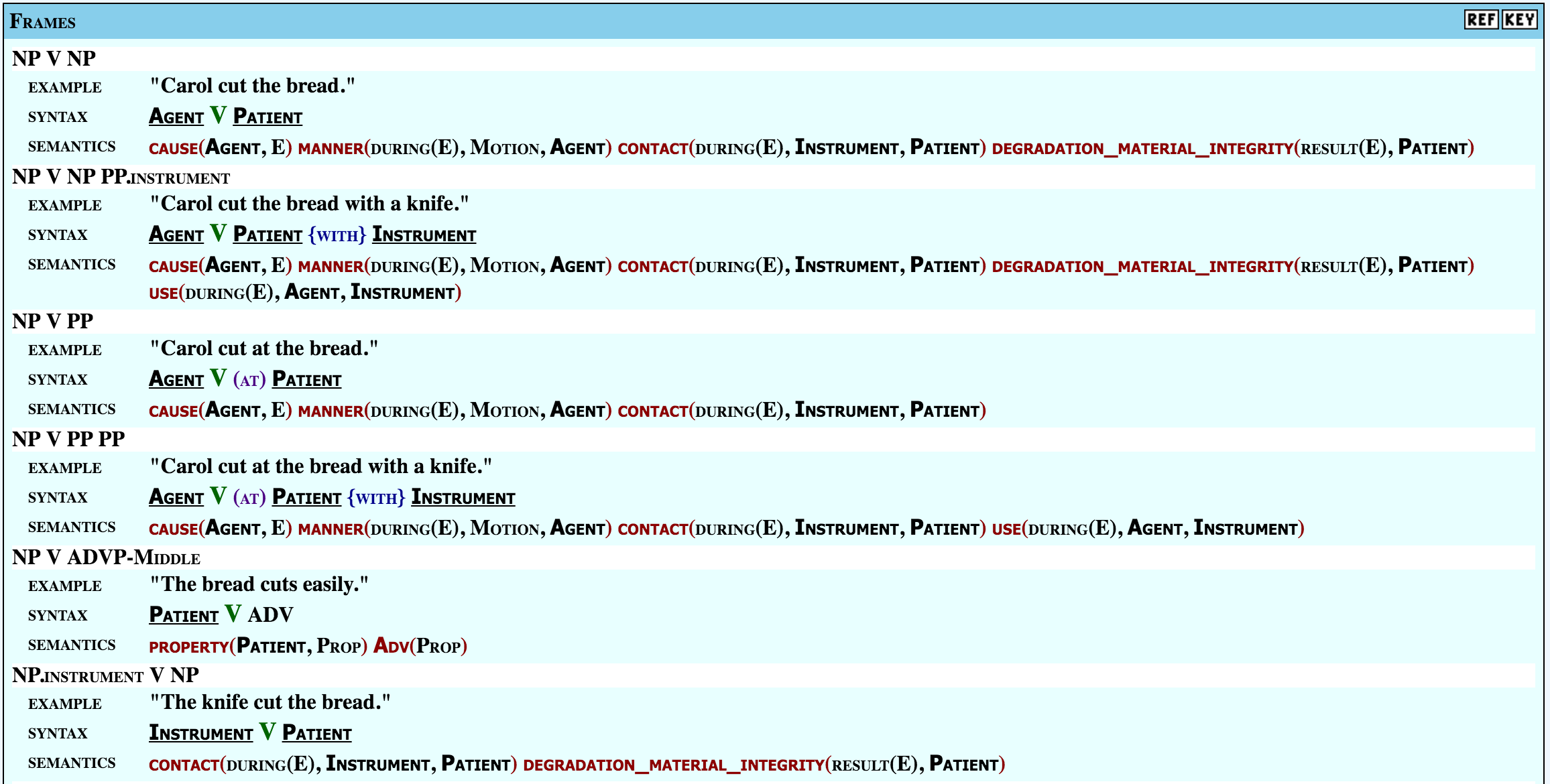
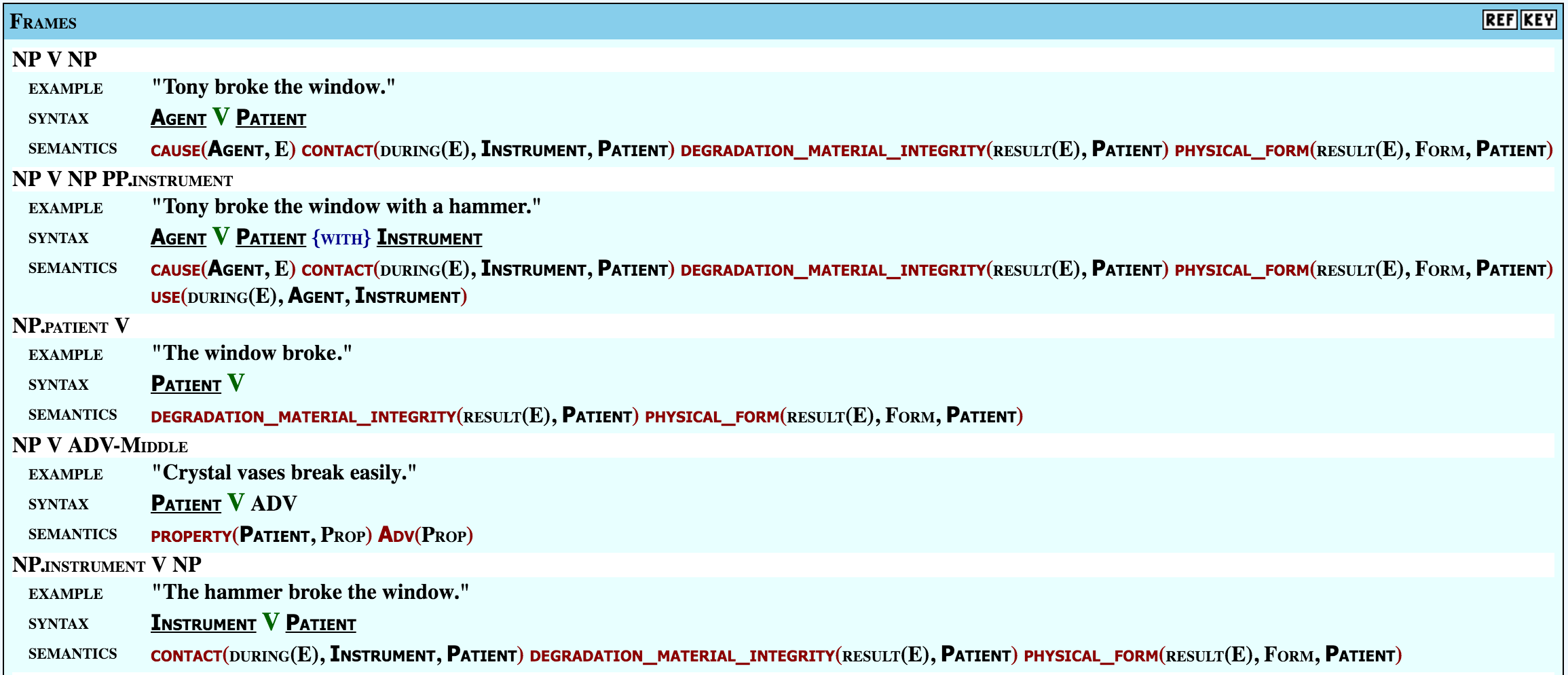
(return to top)
How It All Works
Each VN class contains a set of syntactic descriptions, or syntactic frames, depicting the possible surface realizations of the argument structure for constructions such as transitive, intransitive, prepositional phrases, resultatives, and a large set of diathesis alternations. Semantic restrictions (such as animate, human, organization) are used to constrain the types of thematic roles allowed by the arguments, and further restrictions may be imposed to indicate the syntactic nature of the constituent likely to be associated with the thematic role. Syntactic frames may also be constrained in terms of which prepositions are allowed. Each frame is associated with explicit semantic information, expressed as a conjunction of boolean semantic predicates such as `motion,' `contact,' or `cause.' Each semantic predicate is associated with an event variable E that allows predicates to specify when in the event the predicate is true (start(E) for preparatory stage, during(E) for the culmination stage, and end(E) for the consequent stage). Figure 1. shows a complete entry for a frame in VerbNet class Hit-18.1.
Figure 1: Simplified VerbNet entry for Hit-18.1 class
| Class Hit-18.1 |
| Roles and Restrictions: Agent[+int_control] Patient[+concrete] Instrument[+concrete] |
| Members: bang, bash, hit, kick, ... |
| Frames: |
| Name |
Example |
Syntax |
Semantics |
| Basic Transitive |
Paula hit the ball |
Agent V Patient |
cause(Agent, E)manner(during(E), directedmotion, Agent) !contact(during(E), Agent, Patient) manner(end(E),forceful, Agent) contact(end(E), Agent, Patient) |
VerbNet has recently been integrated with 57 new classes from Korhonen and Briscoe's (2004) (K&B) proposed extension to Levin's original classification (Kipper et al., 2006). This work has involved associating detailed syntactic-semantic descriptions to the K&B classes, as well as organizing them appropriately into the existing VN taxonomy. An additional set of 53 new classes from Korhonen and Ryant (2005) (K&R) have also been incorporated into VN. The outcome is a freely available resource which constitutes the most comprehensive and versatile Levin-style verb classification for English. After the two extensions VN has now also increased our coverage of PropBank tokens (Palmer et. al., 2005) from 78.45% to 90.86%, making feasible the creation of a substantial training corpus annotated with VN thematic role labels and class membership assignments, to be released in 2007. This will finally enable large-scale experimentation on the utility of syntax-based classes for improving the performance of syntactic parsers and semantic role labelers on new domains.
Integrating the two recent extensions to Levin classes into VerbNet was an important step in order to address a major limitation of Levin's verb classification, namely the fact that verbs taking ADJP, ADVP, predicative, control and sentential complements were not included or addressed in depth in that work. This limitation excludes many verbs that are highly frequent in language. A summary of how this integration affected VN and the result of the extended VN is shown in Table 1. The figures show that our work enriched and expanded VN considerably. The number of first-level classes grew significantly (from 191 to 274), there was also a significant increase in the number of verb senses and lemmas, along with the set of semantic predicates and the syntactic restrictions on sentential complements.
Table 1: Summary of the Lexicon's Extension
| |
Original VN |
Extended VN |
| First-level classes |
191 |
274 |
| Thematic roles |
21 |
23 |
| Semantic predicates |
64 |
94 |
| Syntactic restrictions (on sentential compl) |
3 |
55 |
| Number of verb senses |
4656 |
5257 |
| Number of lemmas |
3445 |
3769 |
Table 2: Thematic roles and example classes that use them
|
Actor: |
used for some communication classes (e.g., Chitchat-37.6, Marry-36.2, Meet-36.2) when both arguments can be considered symmetrical (pseudo-agents).
|
|
Agent: |
generally a human or an animate subject. Used mostly as a volitional agent, but also used in VerbNet for internally controlled subjects such as forces and machines.
|
|
Asset: |
used for the Sum of Money Alternation, present in classes such as Build-26.1, Get-13.5.1, and Obtain-13.5.2 with `currency' as a selectional restriction.
|
|
Attribute: |
attribute of Patient/Theme refers to a quality of something that is being changed, as in (The price)att of oil soared. At the moment, we have only one class using this role Calibratable cos-45.6 to capture the Possessor Subject Possessor-Attribute Factoring Alternation. The selectional restriction `scalar' (defined as a quantity, such as mass, length, time, or temperature, which is completely specified by a number on an appropriate scale) ensures the nature of Attribute.
|
|
Beneficiary: |
the entity that benefits from some action. Used by such classes asBuild-26.1, Get-13.5.1, Performance-26.7, Preparing-26.3, and Steal-10.5. Generally introduced by the preposition `for', or double object variant in the benefactive alternation.
|
|
Cause: |
used mostly by classes involving Psychological Verbs and Verbs Involving the Body.
|
|
Location, Destination, Source: |
used for spatial locations.
|
|
Destination: |
end point of the motion, or direction towards which the motion is directed. Used with a `to' prepositional phrase by classes of change of location, such as Banish-10.2, and Verbs of Sending and Carrying. Also used as location direct objects in classes where the concept of destination is implicit (and location could not be Source), such as Butter-9.9, or Image impression-25.1.
|
|
Source: |
start point of the motion. Usually introduced by a source prepositional phrase (mostly headed by `from' or `out of'). It is also used as a direct object in such classes as Clear-10.3, Leave-51.2, and Wipe instr-10.4.2.
|
|
Location: |
underspecified destination, source, or place, in general introduced by a locative or path prepositional phrase.
|
|
Experiencer: |
used for a participant that is aware or experiencing something. In VerbNet it is used by classes involving Psychological Verbs, Verbs of Perception, Touch, and Verbs Involving the Body.
|
|
Extent: |
used only in the Calibratable-45.6 class, to specify the range or degree of change, as in The price of oil soared (10%)ext. This role may be added to other classes.
|
|
Instrument: |
used for objects (or forces) that come in contact with an object and cause some change in them. Generally introduced by a `with' prepositional phrase. Also used as a subject in the Instrument Subject Alternation and as a direct object in the Poke-19 class for the Through/With Alternation and in the Hit-18.1 class for the With/Against Alternation.
|
|
Material and Product: |
used in the Build and Grow classes to capture the key semantic components of the arguments. Used by classes from Verbs of Creation and Transformation that allow for the Material/Product Alternation.
|
|
Material: |
start point of transformation.
|
|
Product: |
end result of transformation.
|
|
Patient: |
used for participants that are undergoing a process or that have been affected in some way. Verbs that explicitly (or implicitly) express changes of state have Patient as their usual direct object. We also use Patient1 and Patient2 for some classes of Verbs of Combining and Attaching and Verbs of Separating and Disassembling, where there are two roles that undergo some change with no clear distinction between them.
|
|
Predicate: |
used for classes with a predicative complement.
|
|
Recipient: |
target of the transfer. Used by some classes of Verbs of Change of Possession, Verbs of Communication, and Verbs Involving the Body. The selection restrictions on this role always allow for animate and sometimes for organization recipients.
|
|
Stimulus: |
used by Verbs of Perception for events or objects that elicit some response from an xperiencer. This role usually imposes no restrictions.
|
|
Theme: |
used for participants in a location or undergoing a change of location. Also, Theme1 and Theme2 are used for a few classes where there seems to be no distinction between the arguments, such as Differ-23.4 and Exchange-13.6 classes.
|
|
Time: |
class-specific role, used in Begin-55.1 class to express time.
|
|
Topic: |
topic of communication verbs to handle theme/topic of the conversation or transfer of message. In some cases, like the verbs in the Say-37.7 class, it would seem better to have `Message' instead of `Topic', but we decided not to proliferate the number of roles.
|
Each verb argument is assigned one (usually unique) thematic role within the class. A few exceptions to this uniqueness are classes which contain verbs with symmetrical arguments, such as Chitchat-37.6 class, or the ContiguousLocation-47.8 class. These classes have indexed roles such as Actor1 and Actor2, as explained above.
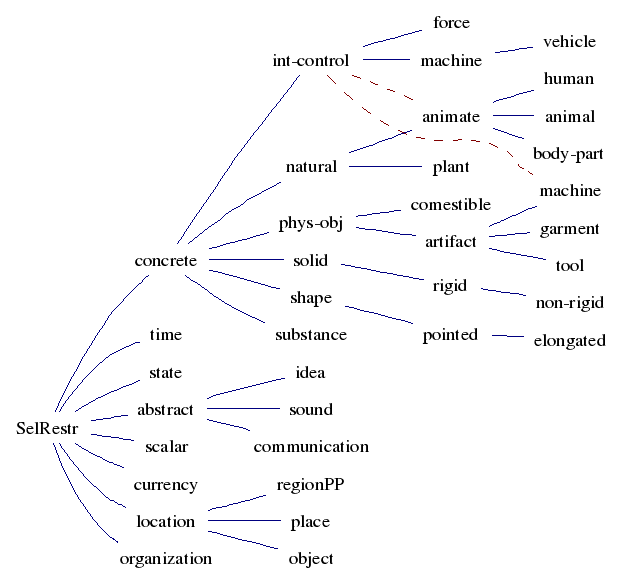
(return to top)
